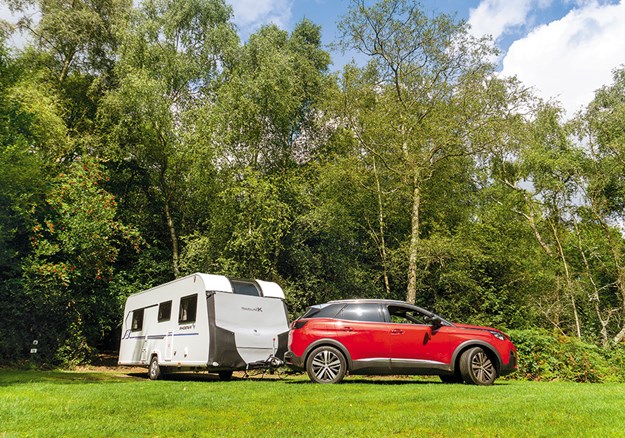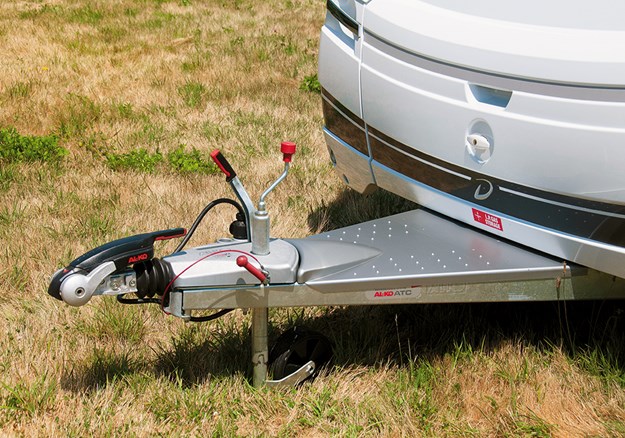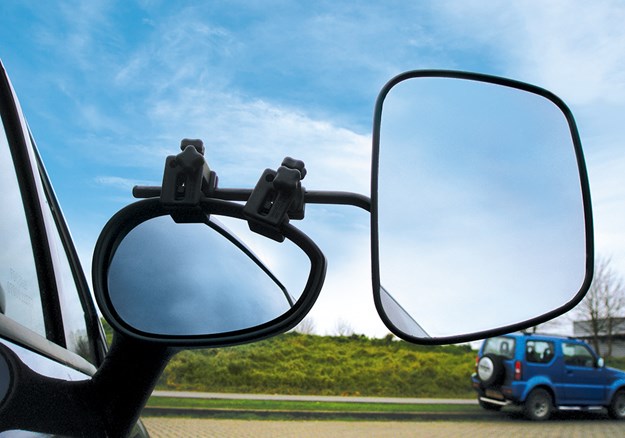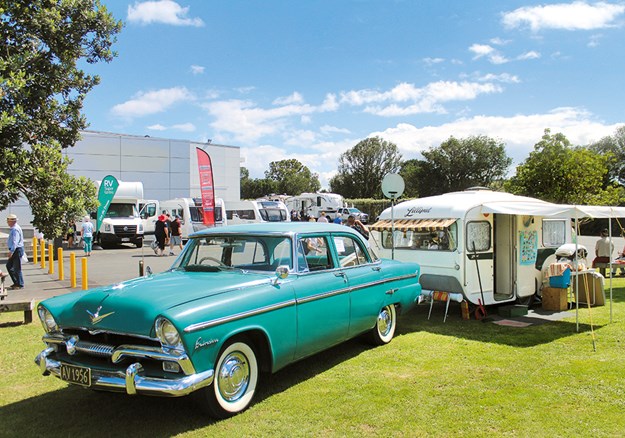
When it comes to the ‘how’ of getting your caravan hitched up, some would say the best way to get into it is to “just do it”. Years ago, when things were less complicated, that was how it was done. Trial and error, learning from your mistakes. In today’s technically advanced, fast-paced world, that’s not a good idea, and no longer a good way to learn the art of caravanning. It could end up costing lots of money, and people could get hurt.
DO I NEED A SPECIAL LICENCE?
No, the driver’s licence that permits you to drive a car also permits you to tow a caravan, as long as the combined weight of the car and caravan (GCW) does not exceed 6000kg. Nearly all car/caravan rigs on New Zealand roads are under 6000kg.
WHAT IS THE LEGAL MAXIMUM WEIGHT MY CAR CAN TOW?
A simple question with a long-winded answer! Most tow vehicles have two tow ratings (in kg), one for braked trailers and one for unbraked trailers (see the tow vehicle manual). Most caravans are braked. But these tow ratings, set by the vehicle manufacturer, are just the start point. Other factors must be considered. Each towing component of the caravan and the tow vehicle (a combination known as ‘the rig’) has a maximum load limit. On the tow vehicle these components are the tow-bar and tow-ball. On the caravan, they are the hitch and the caravan. Just like a car, it too has a manufacturer’s maximum permitted weight. THe caravan also has tow-ball maximum/minimum weights (see the caravan manual).
CAN YOU EXPLAIN WHAT THE TOWBALL WEIGHT IS?
Often overlooked, the tow-ball weight – determined by the tow vehicle manufacturer – is the maximum downward pressure permitted onto the tow vehicle’s tow-ball. Typically, vehicles like family sedans and small SUVs have light tow-ball ratings (under 100kg), making them suitable for towing UK/Euro built caravans, but not the heavier NZ/AU products. Large SUVs and pick-ups can have a rating of 300kg-plus. Tow vehicle tow-ball weights must be compatible with the caravan tow-ball weight requirements. The caravan needs a specific downward pressure on the tow-ball to tow satisfactorily.
WHAT IF I EXCEED THE WEIGHT LIMIT?
It is the vehicle driver’s responsibility to ensure that the weight being carried by each component part of the rig is within its weight limit. If you encounter a police roadside check, they may inspect all these components. If your rig is in an accident and the police become involved, they will check these items to see if overloading played a part in causing the accident – as will your insurer.
ARE ALL TOWBALLS THE SAME?
Be aware there are two tow-ball diameter sizes in use in New Zealand: 50mm and 1 and 7/8ths inches, and they must be paired with the same sized hitch. If the larger hitch is incorrectly paired with the small ball, they can part company of their own accord, with devastating consequences.
WHAT IS ELECTRONIC STABILITY CONTROL?
Now available for caravans, Electronic Stability Control systems (ESC) make towing safer. A good example is the AL-KO ESC. A sensor mounted under the caravan constantly monitors the road behaviour of the caravan, and counters instability by the judicious use of the caravan brakes. It is particularly effective in controlling the caravan when the driver is taking drastic manoeuvres to avoid an accident. Similar products made by different manufacturers are available. Provided as standard kit on new caravans, they can also be retrofitted to older caravans with compatible braking systems.
 |
|
An AL-KO tow bar
|
HOW DO THE BRAKES WORK?
Caravans have either disc brakes and pads, or drum brakes and shoes. Disc brake systems are more sophisticated, and most are electrically operated. A controller inside the tow vehicle allows adjustments to the braking strength while on the move. This system is popular for dual-axle caravans and caravans weighing more than a tonne. Drum brakes systems are mechanical and are cable connected to the hitch mechanism.
Applying the brakes slows the tow vehicle down, so the caravan ‘catches up’, compressing the hitch and activating the brakes via the connecting cables. This system is widely used by EU/UK caravan manufacturers.
CHAINS OR CABLES?
Traditionally NZ/AU caravan manufacturers have used safety chains to restrain the caravan if it detaches from the tow vehicle. Now, many use the breakaway cables. If the caravan detaches, the cable activates the caravan’s brakes, bringing it to a halt. Both methods are effective. Using a cable in place of chain saves weight.
WHAT IS THE MAX TOWING SPEED?
90kph is the maximum speed for a vehicle towing a caravan on New Zealand’s open roads. Otherwise the maximum speed is that posted on the roadside signs.
SHOULD I HAVE TOWING MIRRORS?
Although they are not legally required, and it is possible to do without them, fitting extension mirrors on a tow vehicle gives the driver a much better picture of what’s happening behind. They definitely make the driver feel safer and more confident.
 |
|
Towing mirrors are not legally required, but are a very good idea
|
HOW MUCH PAYLOAD CAN MY CARAVAN CARRY?
The answer is the gross vehicle weight (GVW) less the empty (tare) weight. You’ll need to weigh your caravan – your local refuse station can do this – with any ‘permanent’ items (such as crockery, the awning, bedding etc) aboard. Deduct this ‘new tare’ weight from the GVW to get a practical working payload to use going forward. If your caravan has water tanks fitted, it is good practice to travel with the grey tank empty and 30 litres, more or less, in the freshwater tank. Remember, each litre of water weighs a kilo, so why carry more than is needed.
WHEN WEIGHED, MY CARAVAN IS HEAVIER THAN THE TARE WEIGHT SHOWN IN THE MANUAL, WHY?
This is because extra items – motor movers, solar panels, awning – have been added after manufacture. They are not part of the GVW. They are part of the ‘payload’.
HOW SHOULD I LOAD MY CARAVAN FOR GOOD STABILITY?
A caravan’s stability when being towed depends on it being loaded correctly. Load heavy items centrally, over the axle(s), and low on the floor or in adjacent lockers. Secure them so they stay put while moving. Stow light items like clothing in overhead lockers at the front or back of the caravan. Loading heavy items at the ends of the caravan, either front or back, is a no-no. They can make the caravan sway so severely the driver can lose control of the rig.

GET INTO THE HITCHING HABIT: FOLLOW THE SAME SEQUENCE
- Turn off the LPG bottle.
- If the caravan is on a slope, consider putting wheel chocks behind its wheels.
- Apply the caravan handbrake; raise the corner steadies.
- Raise the tow hitch high enough for the tow-ball to pass underneath.
- If the hitch has stabiliser/hitch levers, raise these.
- Using the jockey wheel handle, lower the hitch until it connects with the tow-ball.
- Lower the stabiliser/hitch levers if necessary.
- Check the security of the connection by raising the hitch 20/30mm using the jockey wheel. The back of the tow vehicle should rise and the hitch should stay connected. Lower the tow vehicle.
- Apply the tow vehicle handbrake.
- Raise the jockey wheel clear of the ground, disconnect and stow it.
- Plug in the electrical cable for lights etc, ensuring it is clear of the road surface.
- Attach the breakaway cable and/or connect the safety chains.
- Check the tow vehicle handbrake is still on before releasing the caravan handbrake.
- Disconnect the motor movers if they are engaged. Once you’ve hitched up, walk around the rig to check all doors, hatches and windows are shut, aerials lowered, and lights operating correctly. Fit and adjust the extension mirrors if you haven’t already done so. Hitching up is an important procedure so don’t rush it, especially on your first few trips. Put aside 30 minutes to do it and take your time.
Find motorhomes, caravans and RVs for sale in NZ





